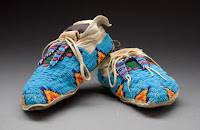Historical Boarding School Healing Symposium provides
framework for moving forward
Boulder, Colo. – May 19, 2011 – More than 30 representatives from the Boarding School Healing Project, Native American Rights Fund, American Indian Law Clinic at the University of Colorado Law School, and Human Rights Clinic at the University of Wyoming and other organizations came together on May 14-15, 2011 to create a framework for healing from the abuses suffered by American Indian children as a result of the U.S. boarding school policy.
“This is a historical event, one that gives optimism that something is really going to happen,” said Don Coyhis of White Bison, Inc.
The goal of the two-day conference was to discuss and craft a national strategy to achieve both national recognition of and an apology for the wrongs visited upon individuals and communities of Indian Country by the U.S. boarding school policy. The strategy would also seek reparations to provide the framework for healing the wounds from these historic and enduring wrongs.
“Intergenerational trauma was a huge theme of the conference,” said Jill Tompkins, director of the American Indian Law Clinic at Colorado Law. “American Indian children forced into the boarding school system later on unintentionally imposed onto their children and their children’s children the scars of growing up without knowledge of their language and their culture, without affection and without a loving family support network. When they finally returned to their tribal communities, they did not know who they were or where they fit anymore. “
Many point to the proliferation of alcoholism, drug abuse and suicide among Indians as evidence of the on-going effects of this period.
Although early in the planning stages, three key themes were expressed at the conference: acknowledgement, justice and healing.
Some of the ways expressed to achieve these themes included:
- The desire and need for a meaningful apology
- Support for language and cultural revitalization
- The implementation of healing programs in each tribe, controlled locally so as to be significant and effective within each community
“All school children graduate knowing about slavery in the United States and its devastating effects on black people and the human toll of the Civil War,” said Coyhis. “No student should graduate high school without knowing about this period of American history and its devastating effects as well.”
The symposium participants agreed to formally establish the Boarding School Healing Coalition which will move forward with a plan for gathering support and implementing the results of the symposium. This may include, but is not limited to: public education efforts, litigation, remedial legislation, and international policy advocacy.
Beginning about 1880 and continuing for nearly the next century, the U.S. government began to promote boarding schools for American Indian children, modeled on Colonel Richard Henry Pratt’s militaristic Carlisle Indian Industrial School in Pennsylvania, as a primary means to assimilate Indian children. By 1902, 154 boarding schools housed 21,500 American Indian children. In some instances the U.S. government subcontracted the operation of these schools to churches. Some of these children were held at the boarding schools from age 5 to 18, many never being allowed to return home to their parents or tribal communities.
They were generally forbidden to speak their native languages, taught Christianity instead of their native religions, and in numerous other ways forced to abandon their Indian identity and adopt European-American culture. They were taught to be ashamed of being Indian, of their culture and religions. Tragically, many cases of mental and sexual abuse have been documented.
Important participants at the Symposium were Chief Wilton (Willie) Littlechild and Marie Wilson, Commissioners of Canada’s Truth and Reconciliation Commission (TRC). Canada modeled its Indian Residential School system on the U.S. model. Thousands of individual and community lawsuits were brought against the Canadian government for abuses, particularly sexual abuse, inflicted on Aboriginal people. The cases were eventually resolved in the Indian Residential School Settlement Agreement, the largest class action in Canadian history, in 2007.
The settlement provided for a payment to all former students who were held in federally supported residential schools, additional compensation for those that suffered sexual or serious physical abuse or other abuses. The Canadian government also made a contribution to the Aboriginal Healing Foundation to support commemoration projects and to establish the TRC. The TRC’s three-prong mission is: to inform Canadians of what happened in the schools; to honor the lives of former students and their families; and, to create a permanent record of the Indian Residential School legacy. Although the Settlement has made some progress in bringing healing to residential school survivors, Chief Littlechild told the U.S. Symposium attendees, “You have a chance to do things better.”
To date, no U.S. Presidential apology or plan to provide redress for American Indian boarding school survivors has been proposed by the federal government. “The time to seek justice and healing for our ancestors and families who suffered the boarding school experience is long overdue, The establishment of the Boarding School Coalition and the development of a mutual shared vision for future action are critical steps forward,” said Tompkins.
[I am still reading "White Mother to a Dark Race" and making notes. Intergenerational Trauma affects Indian Country in so many ways- land loss, loss of children to residential boarding schools, massive adoption of Native children to non-Indians, and outright aggression toward Indian people by the American government. This press release and the seminars are a good sign of progress and healing... Trace]

















